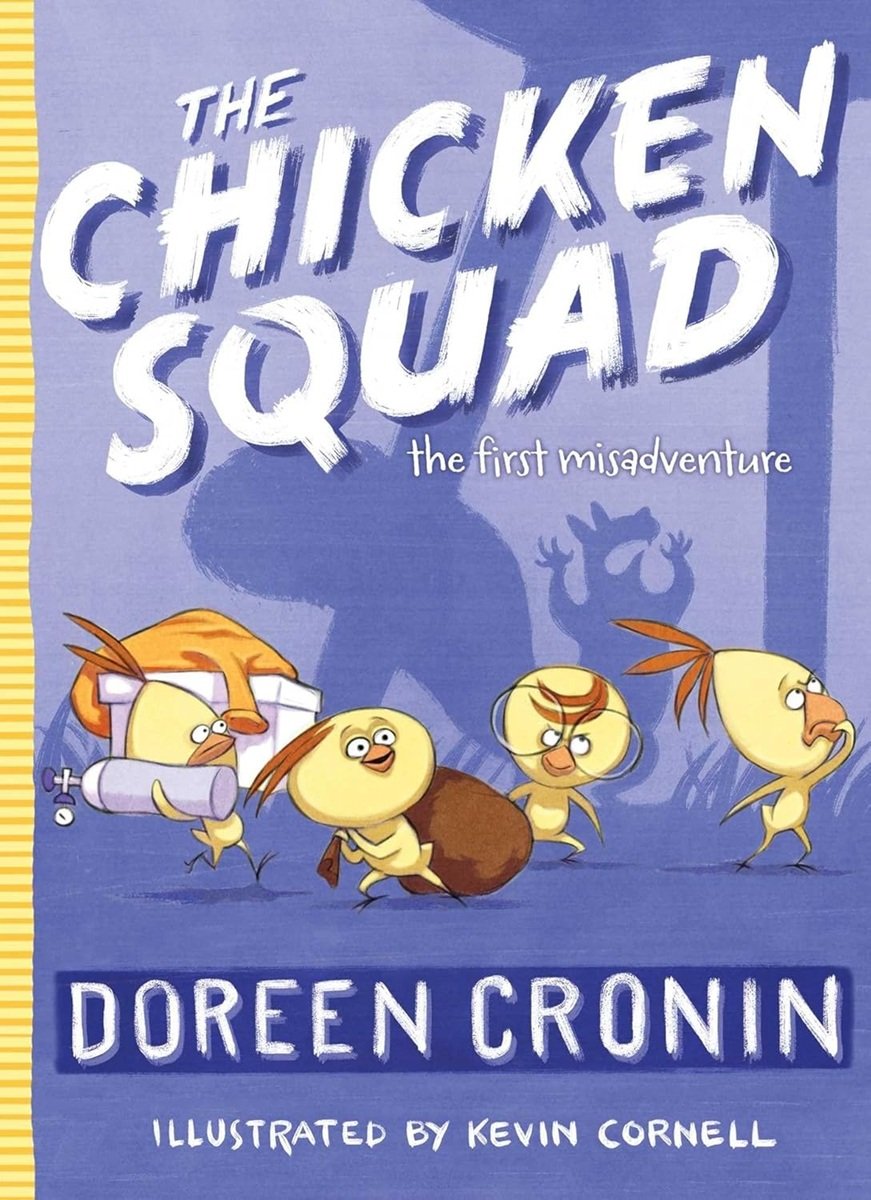Your cart is currently empty!
The Chicken Squad: The First Misadventure by Doreen Cronin is a lively, funny mystery perfect for young readers in grades 2–4. This first book in the series introduces four small but mighty chickens—Dirt, Sweetie, Poppy, and Sugar—who solve big problems with courage, teamwork, and plenty of humor. When a frightened squirrel comes running for help, the squad springs into action, uncovering clues and confronting mysteries in their own quirky way. With fast-paced dialogue, silly antics, and charming illustrations, this book makes a great choice for literature circles, read-alouds, or independent reading while encouraging critical thinking skills.

| Title | The Chicken Squad: The First Misadventure |
| Author | Doreen Cronin |
| Illustrator | Kevin Cornell |
| Year Published | 2014 |
| Series | Book #1 in The Chicken Squad series (spin-off of J.J. Tully Mysteries) |
| Suitable Grade Level (U.S.) | Grades 2–4 (ages 7–10) • Also works well for advanced 1st graders or as a fun read-aloud |
| Key Themes | – Friendship & teamwork – Bravery vs. fear – Problem-solving – Curiosity and imagination – Humor in everyday situations – Loyalty and responsibility |
| Literary Elements | – Characterization – quirky, exaggerated personalities (Dirt, Sugar, Poppy, Sweetie, J.J. the retired dog) – Plot – mystery-adventure with comedic missteps – Conflict – misunderstanding of a supposed “threat” (the lawn mower) – Point of View – humorous narration with J.J.’s commentary – Setting – backyard world, small-scale adventure – Tone – playful, light, witty |
| Rhetorical Devices | – Hyperbole – chickens’ over-the-top reactions – Irony – serious mystery tone about a harmless “monster” – Personification/Anthropomorphism – animals act and speak like humans – Wordplay and Puns – clever use of language for humor – Dialogue – fast-paced banter reveals personalities – Suspense & Comic Timing – builds tension only to end in a silly resolution |
| Curriculum Connections | – Language Arts – exploring humor, point of view, dialogue, and figurative language – STEM Tie-ins – problem-solving, making predictions, investigation skills – Social-Emotional Learning (SEL) – teamwork, managing fears, interpreting situations carefully – Creative Writing – students can write their own “misadventure” mysteries – Illustration and Visual Literacy – examining how pictures enhance comedic storytelling |
The Chicken Squad: The First Misadventure
The Chicken Squad: The First Misadventure by Doreen Cronin delivers a funny, fast-paced mystery with four daring chicks. A playful adventure for kids—available now on Amazon.
This is an affiliate link; we may earn a small commission at no additional cost to you.

